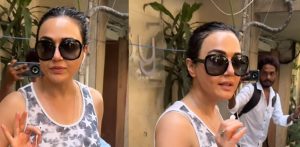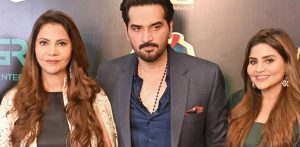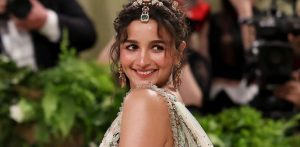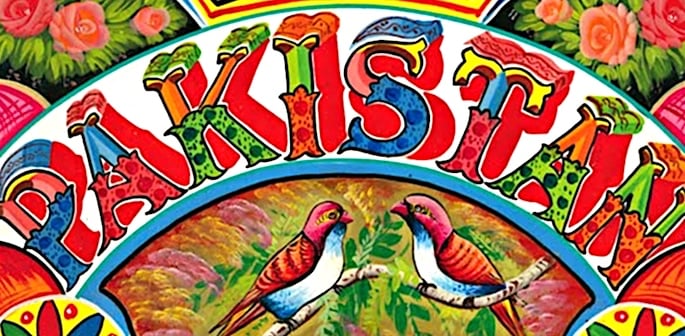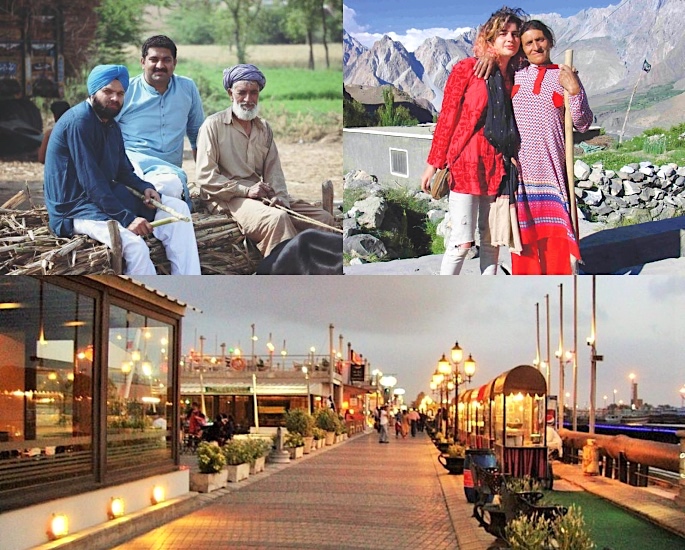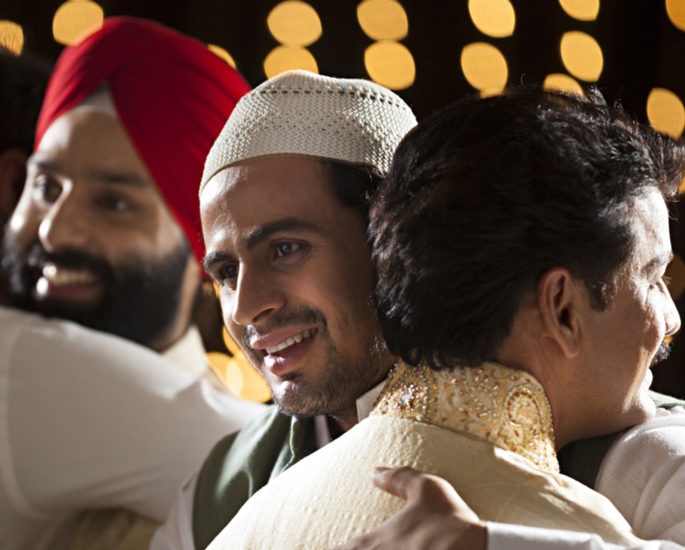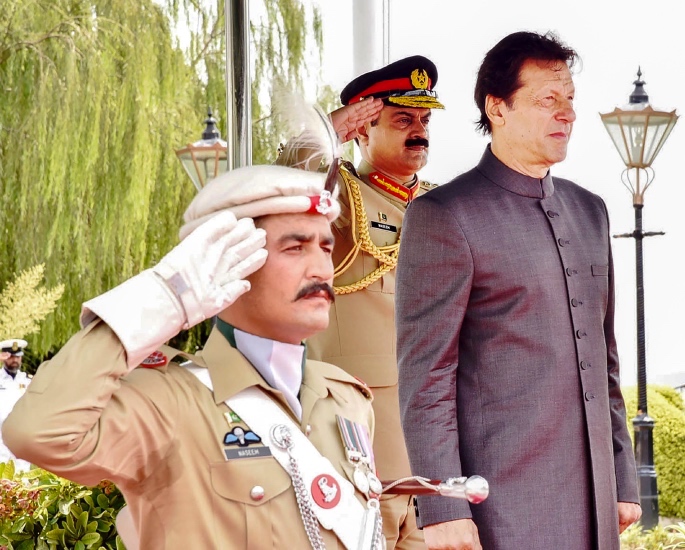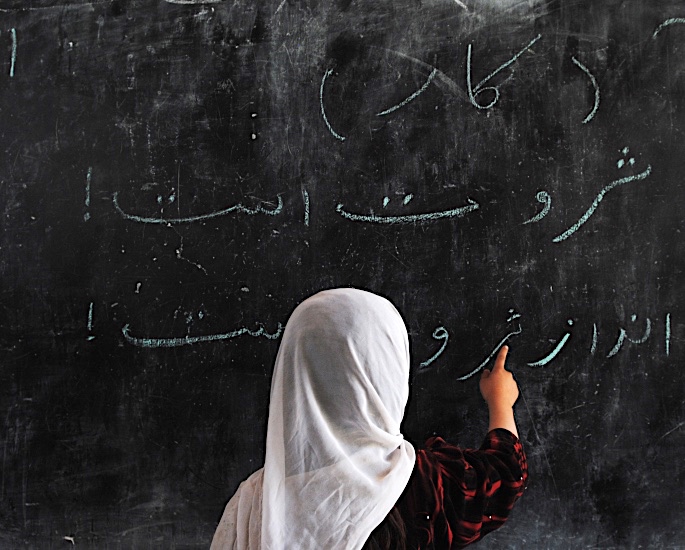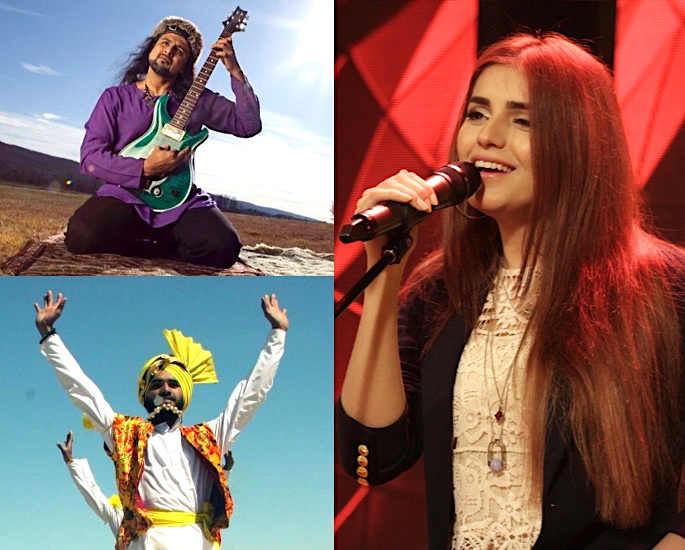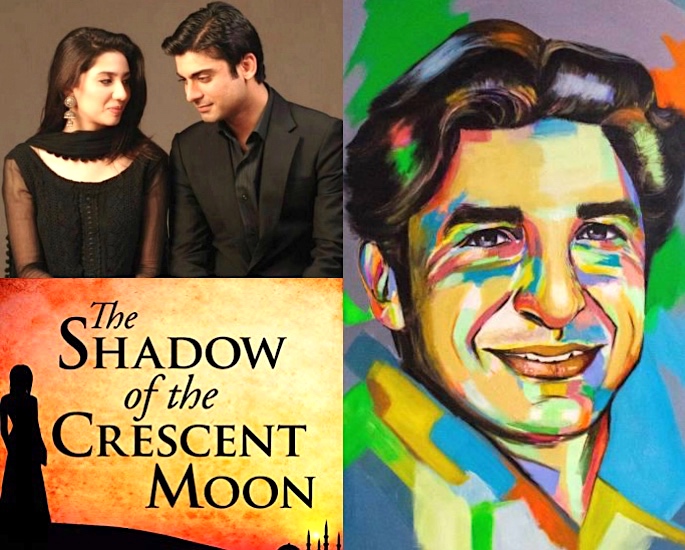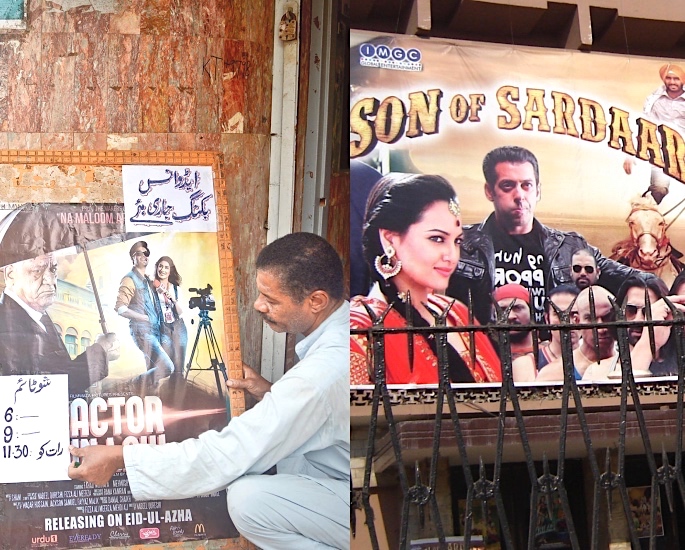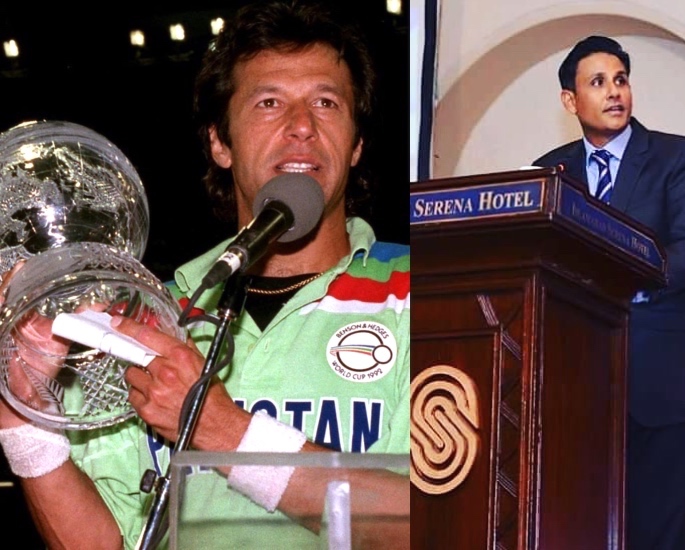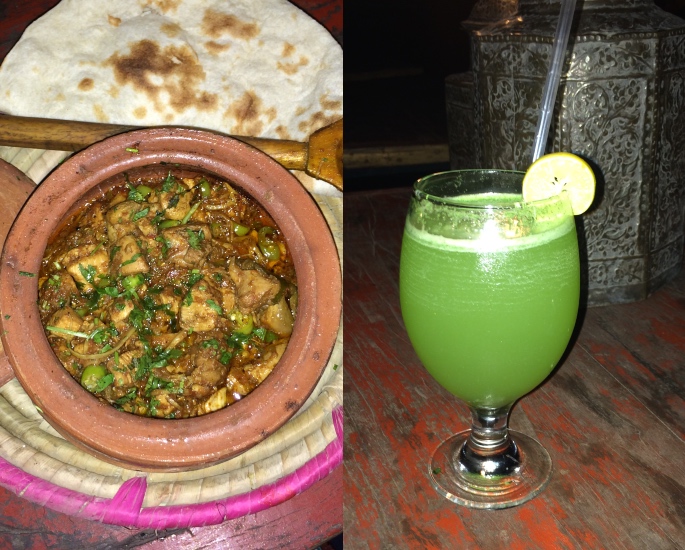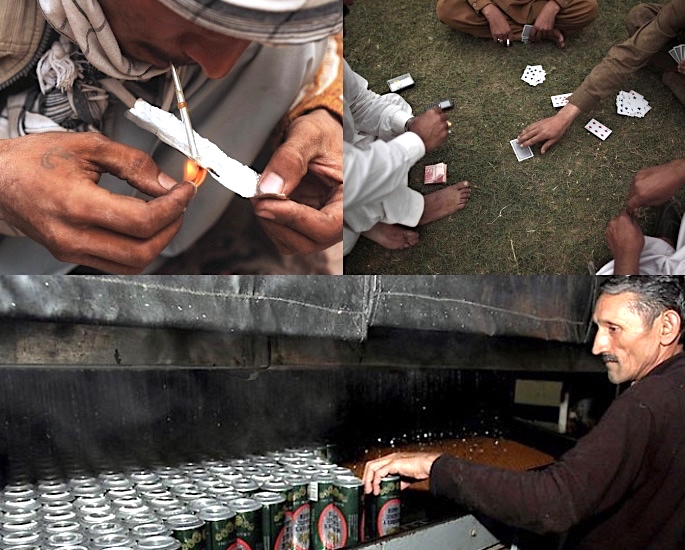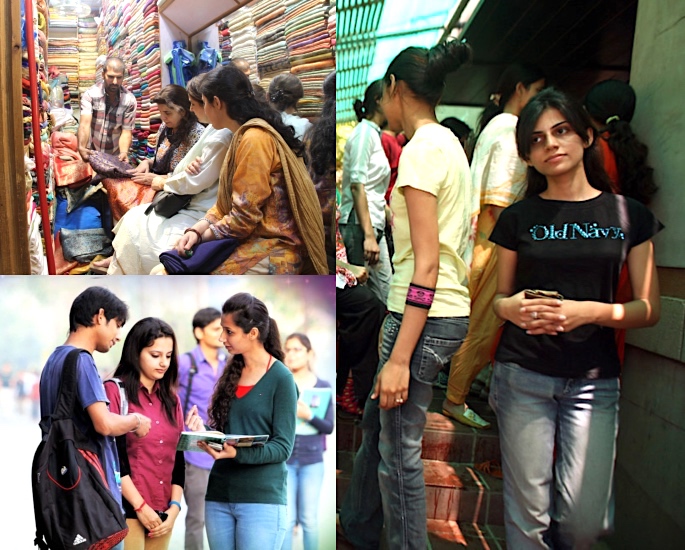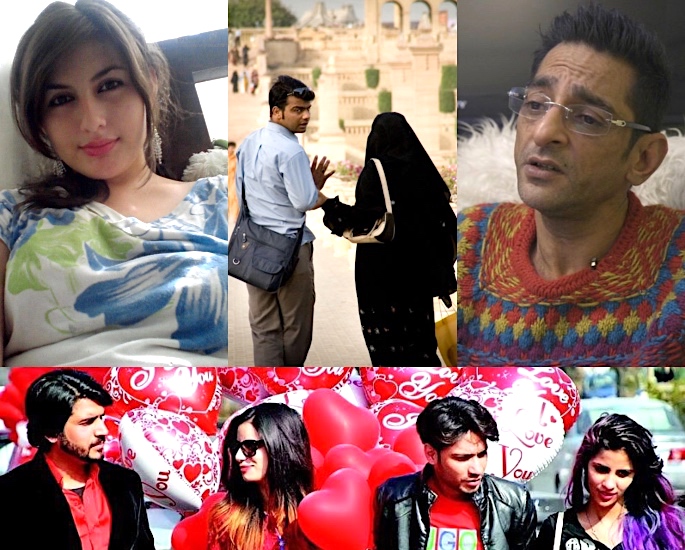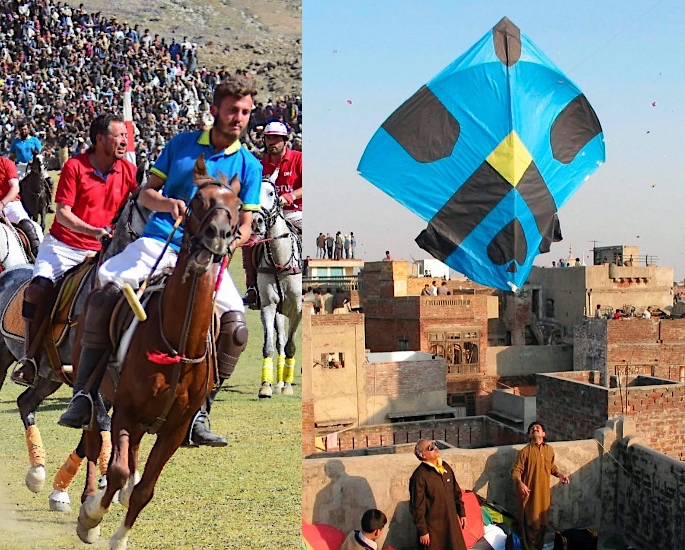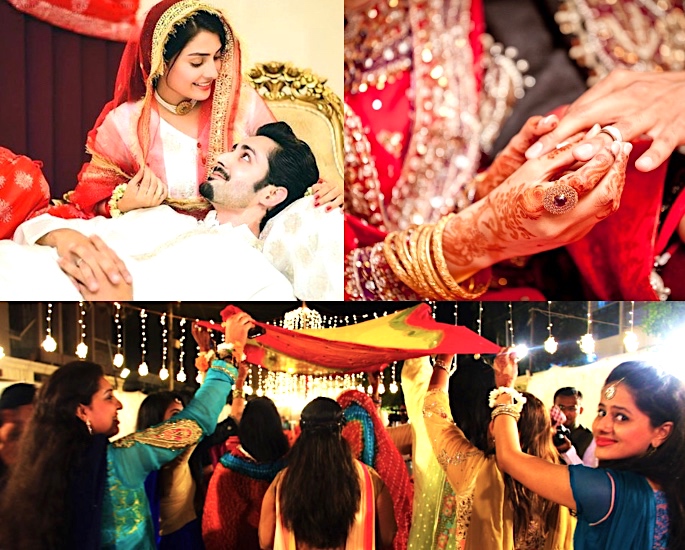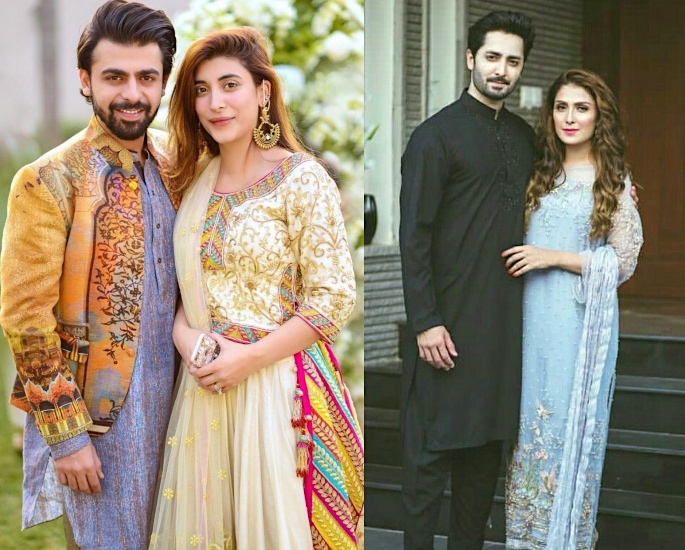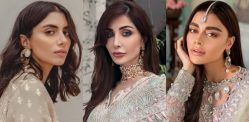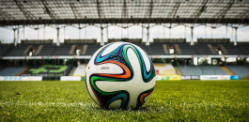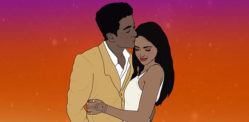"The inner soul of Pakistani culture is embedded in the belief that the universe is based on a Truth"
Pakistani culture constitutes many comprehensive areas, along with several contentious issues. Pakistan’s rich culture varies from geographic environment to its land and people.
This includes the cultural inflow and racial mix across regions, the various faith and occupational groups, along with the urban and rural divide.
The culture reflects diversity in the areas of beauty, customs, food, language, fashion, dress, music, hospitality, and much more.
Based on a mixture of local, regional and national traditions, the culture of Pakistan is influenced by religion, spirituality and well expressed through arts and literature.
Despite women in different regions of Pakistan wearing modern, exquisite and colourful clothing, the main faith of the country expects them to dress modestly.
Similarly, this applies to food and culinary art.
Even though many dishes in Pakistani homes will tickle those taste buds, none of them comprises of liquor and pork.
There is a prohibition for this in the main religion of Pakistan.
Some of the elements of Pakistani culture reflect history, values and a liberal outlook.
Whereas there are others which try to eliminate ignorance, prejudice and intolerance. There are a few grey areas of concern too.
From an ideological perspective, renowned linguist Dr Jameel Jalibi describes Pakistani culture stating:
“The inner soul of Pakistani culture is embedded in the belief that the universe is based on a Truth, which is Absolute.
“The Immutability of Truth stabilises faith, without which neither the faith nor the beliefs could be sustained.
“It is the awareness of this truth, which gives a meaning to Pakistani culture.”
To find out more, here are 15 key things you need to know and learn about Pakistani culture.
The People, The Beauty, Urban and Rural life
The tribal system in the provinces of Khyber Pakhtunkhwa (KPK) and Balochistan have held onto many old traditions.
Pakhtunwali is the ethnic code of the region, formerly known as North West Frontier. It has three key characteristics, including badal (revenge for injustice), melmastia (hospitality) and nanawati (sanctuary).
One of the main foundations of Pakhtunwali is the jirga, the assembly of elders who meet and decide on disputes.
When it comes to Balochistan, in the summer one is likely to see shepherds feeding their herds and other animals.
It is also a common sight to come across fishermen with their nets along the Makran coastline.
The rural areas of Punjab and Sindh consist of cultivational societies.
In Sindh, particularly, there are feudal lords. They not only own quite a bit of land but use it as a powerful tool to govern and suppress the poor people in their area.
It is as if people are still living in medieval times.
Village life is pure and simple, revolving around agriculture.
Starting their day early, men are mostly farmers or labourers in the countryside. Some women also work in the country as seasonal labourers when crops yield the result.
Cities and towns bear the harmony and tempo of modern life. With more opportunities, the bigger cities are more lively with all the hustle and bustle.
A city like Lahore has parks, libraries, educational institutions, stunning gardens. historical monuments, commercial centres, venues, good housing schemes and nightlife.
With Pakistan not having an open nightclub culture, people enjoy eating out in the evening.
Karachi is a modern cosmopolitan city, with a fast-rising skyline. People have barbecues on many private beaches with blue waters of the Arabian Sea not too far in the distance.
Smaller towns are more peaceful, with less activity in comparison to industrial cities such as Faisalabad.
The picturesque northern areas of Pakistan provide a surreal setting for tourists. Locals welcome foreigners with great hospitality.
Religions of Pakistan
Islam, Hinduism, Christianity, Ahmadi, Sikhism, Zoroastrianism, Bahá’í, Paganism are the different religions in Pakistan.
More than 96% of Pakistanis are followers of Islam and are referred to as Muslims. Islam is the state religion, The official name of the country is the Islamic Republic of Pakistan.
The two main branches of Islam are Sunni and Shia. There are many sects within these two branches.
Followers of all other religions make up just over 3% of the population. Besides Islam, other faith groups come under religious minorities in Pakistan.
Hinduism and Christianity are two of the biggest minority religions in the country.
People belonging to the Hindu faith predominately live in Sindh, particularly Karachi, Hyderabad and surrounding areas.
Christians live all over Pakistan, with some flourishing economically in urban areas. Christianity is made up of Roman Catholics with a few Protestants and other factions.
Followers of the Ahmadi Community are at large, with many living in their headquarter city of Rabwah.
There is a small community who follow Sikhism in Pakistan. Sikhs primarily live in Nankana Sahib and Lahore, Punjab. But some also reside in the KPK province.
Then there is the Bahá’I faith, which has roots going back as far as 1844. Although estimates suggest that this religion is gradually diminishing.
The Parsi community belonging to the Zoroastrian faith is quite dominant within the business community of Karachi.
Ardeshir Cowasjee (1926-2012) was a prominent writer and a philanthropist born to a famous Zoroastrian household.
The people of Kalash from the northern parts of Pakistan practice a pagan form of religion.
There are many churches for Christians and Hindu temples throughout the country.
Lahore houses a number of Gurdwaras. Nankana Sahib is a holy place for Sikhs. But is given equal respect by all religions in Pakistan.
Muslims who live in Nankana make special arrangements to welcome Sikhs from all over the world.
With Nankana Sahib being the birthplace of Guru Nanak Ji, a large contingent of Sikh pilgrims also arrive from India and the UK.
There is a quota allocation for religious minorities in Pakistan. This applies to government jobs and political seats.
Such quotas aim to ensure that minorities get equal opportunities where applicable.
Politics and Military Rule
The political culture is very important for Pakistanis as it affects their daily life in some way or the other.
Since the creation of Pakistan, along with civilian governments, the Pakistan military has also been in power.
Pakistan is one of few nations, which has seen military rule dominate the country.
Muhammad Ali Jinnah (1876-1948), founder of Pakistan sadly did not live long after the formation of Pakistan.
Consequently, within the first decade, Pakistan had several leaders governing the country.
Following the initial musical chairs, military rule began, stretching until the Dhaka fall in 1971.
With Bangladesh liberating, Pakistan was in the hands of Zulfiqar Ali Bhutto (1928-1979). Zulfiqar was founder and leader of the Pakistan Peoples Party (PPP).
In 1977, General Muhammad Zia-ul-Haq (1924-1988) who was then Chief of Army Staff (COAS) came into power, imposing martial law.
Zulfiqar was convicted in a murder case and hanged till death. As a result, his daughter Benazir Bhutto (1953-2007) went into exile.
During this time, the Pakistan Muslim League Nawaz (PML-N) came into the equation under the support of the Zia regime.
In 1988, General Zia left this world, following an aeroplane crash.
After his demise, the two major parties namely Pakistan People Party and PML-N Muslim League Nawaz went onto governing the country.
In 1999, General Pervez Musharaf got into power, courtesy of a coup d’etat, ruling until 2008.
In 2008, the two old parties PPP and PML-N did contest the elections, with emerging party, Pakistan Tehreek-e-Insaf (PTI) boycotting them.
The 2008 election was won by PPP, with the PML-N winning seats in the Punjab Provincial Assembly.
With PML-N triumphant in the 2013 elections, PTI did not accept the results. They felt mass rigging had taken place.
General Raheel Sharif became the 9th Chief of Army Staff(COAS) in 2013. People did appreciate his tenure as he did promote the military’s image in good light.
However, in 2018 PTI finally did manage to form a government under the leadership of Imran Khan.
In the past leaders of PPP and a PML-N have been known to use inappropriate language. But many believe Imran has taken this a step further.
People are in shock that their once favourite cricketer, an Oxford graduate, is not setting a good example for the youth.
Imran’s opponents feel he has been promoting a culture of intolerance, using foul language.
Having said that, Imran has put good pressure on the opposition in relation to the accountability of genuinely corrupt people.
Languages
People of Pakistan speak over 70 languages. Urdu is the national language, with it being spoken throughout the country.
Urdu is a mixture of many languages from Asia, making it very sweet in its final form.
Families, specifically parents encourage and teach children to speak Urdu, especially at home.
People in Pakistan also learn Urdu so that they can then easily communicate with people from different ethnic groups and provinces.
Pakistan once part of India was a former colony of the British.
The effect of colonialism and independence meant English became an important language to communicate for most government and official matters.
The people of Pakistan learn English as a second language through education and at work. Most people with a higher education know English pretty well.
People in the big cities feel by speaking English frequently they are cooler and see it as a status symbol.
Many people in Pakistan are learning English with the advent of smartphones, social media and satellite/cable television.
The Punjabi language is spoken in the Punjab province of Pakistan. Spoken Punjabi in Pakistan is almost the same as Punjabi in India.
For example, the Arain biradri (caste) living in Pakistan speak Jalandari Punjabi. This is because many were from the Indian side of Punjab during pre-partition India.
People in Southern Punjab including the city of Multan speak the Saraiki language. Saraiki is a form of Punjabi dialect with elements of Sindhi and Balochi in it.
With KPK province being near the border of Afghanistan, inhabitants of here speak Pashto, similar to their neighbours. Pashto is the common language between the people of Afghanistan and KPK in Pakistan.
Hindko is also spoken in parts of KPK. Hindko can be understood by Punjabi and Saraiki speaking people.
Sindhi is the language of rural areas, with Urdu spoken in the urban side of Sindh. The reason behind two languages in one province is the makeup of the population.
After partition, Urdu speaking people who came from India did settle in the urban areas of Karachi and Hyderabad. People who were already living in the rural areas of this province speak Sindhi.
The Memon and Parsi communities of Sindh also speak Gujarati in cities like Karachi.
Balochi is the language of Balochistan province.
With Balochistan in close proximity of Afghanistan and Iran, Persian and Pashto are also spoken in this province too.
The Potwari language covers the Potohar plateau (northern Pakistan), which includes the capital Islamabad, twin city Rawalpindi and the town of Gujar Khan. This is a form of Pahari language.
Similar to Potwari, people in Pakistan administered Azad Kashmir converse in Mirpuri.
Music and Dance
Relative to Pakistan society, three aspects of music have gain widest popularity.
Traditional music has three branches, including qawwali, ghazal, and classical. Qawwali is a spiritual form of music that is more than seven centuries old.
As a way of diving into Sufism, qawwali is a regular feature at Sufi shrines and sanctuaries, along with mystical events and special ceremonies.
Ghazal is the poetic expression of love and emotions. Ghulam Ali is an excellent singer of the ghazal. This form of music is popular with the older generation of Pakistan.
Melodious tunes like thumri and dadra create a magical force in the production of the ghazal.
Regional variations of simple classical music ragas such as bhairvin and kafi have found an undying home in Pakistani melody. This is via traditional folk and spiritual music.
These musical compositions have a deep connection with great Sufis like Bulleh Shah (1680-1757) and Shah Abdul Latif Bhittai (1689-1752).
Originating from the different provinces of Pakistan, folk music depicts the cultural behaviour of the people, their feelings, optimism and ambitions.
Over centuries, people have gone to express these through the folk song and dances emanating in various regions.
Many dancing movements and expressions link to these folk songs. These include tappa, sammi, gidda, luddi, jhumar, bhangra, jugni and jamalo.
Likewise, many folk love tales such ‘Heer Ranjha,’ ‘Mirza Sahiban’, ‘Sohini Mahiwal’, are also vocalised in particular thematic modes.
Historically there are many Balochi and Pashto folk songs which are still in existence.
Special shows on folk music broadcast on Pakistan Television and Radio.
Contemporary music comes in the form of pop and rock. Pop music became popular in Pakistan with hit song ‘Ko Ko Koreena’ from Armaan (1966).
The cassette culture, along with rising stars Nazia Hassan (1965-2000) and Zoheb Hassan got pop music to reach peak heights in the 80s.
Then came a host of bands such as Vital Signs, Awaaz, Fuzon and Junoon.
Coke Studio is famous for introducing new talent to the music industry.
Popular musical instruments part of a composers repertoire in Pakistan include guitar, sarangi, sitar, tanbura, dholak, bansuri and harmonium.
Folk singers are still reliant upon the traditional chimta (iron tongs).
Arts, Literature and Drama
Painting is a highly popular art form in Pakistan.
Besides older and classical trends of image and abstract style painting, artists have been combining modern trends. These highlight the environment, local scenes and lots more.
Artists display their work through exhibitions and galleries, catering for art lovers in major cities such as Karachi, Lahore and Islamabad.
Famous painter Jimmy Engineer is presenting a good image of Pakistan throughout the world by merging all cultures through his work.
One of the core reason for Engineer travelling across the globe is to market and promote the culture of Pakistan.
Another good painter is Iqbal Hussain. Iqbal is known for painting the dancing girls of Heera Mandi in Lahore.
Shanzay Sabzwari and Amina Ansari are youthful painters making headlines in Pakistan.
People in Pakistan love poetry, be it in many forms. That includes through mushairas and mehfils. Poetry is usually of a romantic or emotional nature.
The Iqbal Academy is carrying forward the legacy of the famous poet and philosopher Sir Muhammad Iqbal. The academy regularly organises cultural events with an emphasis on Iqbal and his works.
Similarly, organisations also set up events remembering eminent poets such as Faiz Ahmed Faiz.
Like poetry, fiction also enjoys huge popularity amongst all classes of Pakistan.
People admire the pre-partition and post-war era writers such as Saadat Hasan Manto (1912-1955), Ismat Chughtai (1915-1991 and Ashfaq Ahmed (1925-2004).
Contemporary fiction writers include Mohsin Hamid who wrote The Reluctant Fundamentalist (2007) and Fatima Bhutto who penned The Shadow Of The Crescent Moon (2013).
Drama is the ‘Jewel in the Crown’ for Pakistan – be it theatre, plays or television serials.
Many writers, producers and actors have had a major impact on popularising drama in Pakistan.
These include Amjad Islam Amjad, Fatima Surraya Bajia (1930-2016), Haseena Moin, Rahat Kazmi, Shahnaz Shaikh, Abid Ali, Umar Sharif, Munnu Bhai (1933-2018) and Sarmad Sultan Khoosat.
Successful stage plays and dramas such as Bakar Qiston Pe (1989), Tanhaiyan (1985), Ankahi (1982) and Sona Chandi (1983) are available to watch on video and online.
The drama serial Waris featuring Mehboob Alam as Chaudhry Hashmat Khan was such a big hit.
On evenings when this drama was shown, shopkeepers would put their shutters down early. There were many fans of this drama in India.
Pakistan Television (PTV) did play a big part in creating fantastic dramas.
With the advent of satellite and cable technology, people began to watch dramas on private channels such as GEO Entertainment and HUM TV.
Humsafar (2011-2012) is a modern blockbuster drama series, kick-starting the careers of heartthrob Fawad Khan and the gorgeous Mahira Khan.
Other big names in the contemporary world of drama include Mawara Hocane, Sajal Ali, Ahad Raza Mir and many more.
Award-winning playwright and screenwriter Shahid Nadeem has had a major contribution in the world of theatre.
The Al Hamra Arts Council in Lahore hosts many top stage plays and theatrical performances.
The revival of Pakistan Cinema and Bollywood Films
With the revival of Pakistani and Bollywood films in Pakistan, more and more people are flocking to the cinemas.
The Pakistani film industry is often referred to as Lollywood. A take on Hollywood using the city as Lahore as the film capital of the country.
Pakistani films did suffer in the late 90s, with censorship also playing a vital role in curtailing the wings of cinema.
Thus, Pakistan cinema saw a massive decline during parts of this period, heading into the new millennium.
The saving grace during difficult times was Punjabi cinema led by Sultan Rahi (1938-1996) and Mustafa Qureshi. Their film Maula Jatt (1979) is a cultural Punjabi cult classic.
However, in the mid-2000s, Pakistan cinema began to revive with a new wave of directors and actors.
With the quality of films improving, some existing and news sites saw the introduction of multiplex cinemas.
Big shopping complexes in the big cities house many of the multiplex cinemas. There are also modern cinemas built in lavishing housing schemes such as Defence and Bahria Town.
The cinemas have the benefits of modern technology and reclining seats for avid movie goers.
Another reason for people going to the cinemas is the reintroduction of Bollywood films. An unofficial ban on Indian movies was given the green signal by General Pervez Musharraf.
Films such as Mughal-E-Azam (1960), Taj Mahal: An Eternal Love Story (2005) were initially shown in Pakistan. Ever since then all top Bollywood films have screened in Pakistan cinemas.
However, any film against the national interest of Pakistan is usually not given the go ahead. Censorship plays a big part in respect to Bollywood films too.
Bollywood movies did also help cinema owners to keep their businesses afloat until the release of better Pakistani movies.
Indian films are still more popular in Pakistan than Lollywood. Bollywood figures such as Shah Rukh Khan have a massive following in Pakistan.
With Pakistan housing, the likes of Fawad Khan and Mahira Khan, Pakistan cinema is slowly catching up.
Actress Sana Fakhar talking about the revival of Pakistan cinema says:
“Pakistan’s film industry witnessed a severe crisis for almost 15 years. Gradually, it started to see the light of day and good film-making resumed in the country yet again.
“The cinema sector is finally flourishing and Pakistan’s back on the map with its films.”
Former Minister of State for Information, Broadcasting and National Heritage Marriyum Aurangzeb said in June 2018 that Pakistani films can promote culture.
Cricket and Sports Crazy Pakistan
Pakistani people are crazy about the sport of cricket. Former legends Imran Khan, Javed Miandad and Wasim Akram are an inspiration to many, particularly the youth.
When Pakistan won the 1992 Cricket World Cup, 2009 ICC World T20 and 2017 ICC Champions Trophy, everyone came together to rejoice with the nation.
People went onto the streets dancing in celebration.
Many young aspiring cricketers will watch former heroes in action on YouTube and try to emulate them.
Young children start playing cricket on the streets and across several grounds from an early age. All major cities and towns have clubs, teams and grounds for matches.
Many will join these clubs to play regular cricket and stay actively fit.
Players receive support from different organisations to play at a local and regional level initially. If they have the talent, they can go on to represent at the national level.
Hockey is the national game of Pakistan, with the country becoming World Cup champions 4 times. But despite it being the national sport, the game has gone downhill in the modern era.
Squash is popular amongst the upper class of Pakistan. Pakistan once did dominate the sport, courtesy of world-class players such as Jahangir Khan and Jansher Khan.
Jahangir holds the world record of 555 unbeaten matches in squash. Jansher Khan is also a legendary player of squash, winning the World Open, a record eight times.
Squash has been a big motivation for the likes of Junaid Sami Khan, younger brother of Adnan Sami to passionately take up the sport.
Even though Pakistan is not so lethal in football, the game is widespread across the country. There are many clubs, teams grounds and football facilities in the country.
People also watch regular Premier League Football on channels which broadcast LIVE matches. There are many fan groups on social media for all the top teams.
The younger generation is also turning to different games, particularly those which feature in the Olympic Games.
The success of Muhammad Wasim (Boxing), Aisam-ul-Haq Qureshi (Tennis), Muhammad Inam Butt (Wrestling) are major contributing factors of other sports increasing their popularity in Pakistan.
Multiple Guinness World record holder Ziyad Rahim has done a wonderful job combining marathon running with tourism adventures in Pakistan.
Ziyad has successfully organised several marathons in the country.
The biggest advantage Pakistan has is that it produces in-house sports goods. With the city of Sialkot acting as a hub for this, there is no shortage of equipment, kits in the country. That too at a cost-effective price.
During major World Cup cricket events, the official kit of the Pakistan team is very popular with the masses. People purchase and wear it while viewing their favourite team in action.
Food and Drink
People throughout Pakistan love their food. But the people of Lahore and Karachi are the biggest foodies.
Cuisine within Pakistan is diverse and delicious. People in villages start their day with lassi, a traditional drink made of milk, either with a salty or sugary effect.
For breakfast, villagers make roti, which is basically like pita bread made with wheat flour, along with tea.
Lots of fresh fruit, curries made with natural ingredients, jaggery are all eaten by people living in villages.
With farmers working hard in the agriculture sector, women also use desi ghee (genuine country butter) in food.
In cities of Pakistan, people start their day with traditional bread, jam, egg and tea. Another popular start-up of the day is paratha with tea. Paratha is similar to roti but is made using oil.
On days off, people also eat halwa puri channa in the morning or as a brunch time meal.
For lunch and dinner, meals could be light or heavy, subject to each individual and their timings. People will eat at home or out.
Major towns like Lahore, Karachi, Faisalabad, Quetta, Islamabad and Peshawar have a good mix of restaurants, street food and top hotels where you can eat.
A lot of these places serve desi, along with dishes from around the world and fusion food.
Serena Hotel (Faisalabad), Cooco’s Den (Lahore), Café Flo (Karachi), Tuscany Courtyard (Islamabad), The Refreshment Centre (Rawalpindi), Namak Mandi (Peshawar) and Gulshan Karahi (Quetta) are few of the famous places to eat out.
For the hardcore food lovers in Lahore, Butt Karahi is also good to try.
Families and kids also go out to eat at the many internationally known fast food chains such as Pizza Hut, McDonalds, Hardees and KFC. Many of these food outlets are Drive-thru.
When people are travelling around Pakistan, there are many good restaurants and roadside joints where people can enjoy a good meal.
For example, on the Grand Trunk (GT) road, there is the Mian Jee restaurant, famous for serving daal (pulse) and roti.
The Kinara restaurant in Gujrat by river Chenab has great food, atmosphere and LIVE music.
There are many regional cuisines in Pakistan. Sajji, a meat dish from Balochistan and Chapli Kebab in KPK are popular in these provinces.
People like to eat saag (spinach) with makki di roti (chapatti made with cornmeal) in Punjab. The biryani (rice dish) of Sindh is very appetising.
Harissa (meat dish) is popular amongst the Kashmiri community living in Pakistan.
When it comes to drinking, people have tea regularly in the summer and at night when there is a slow breeze,
Hotels serve tea till late at night. Kashmiri chai is given to guests during weddings held in winter.
Other drinks people consume include falooda (cold dessert), rooh afza (rose syrup), shikanjvi (sweet lime/lemonade) and dhoodh soda (milk with 7Up).
Alcohol, Drugs and Gambling
There is a strict prohibition of drinking and selling alcohol for Muslims in Pakistan. That does not mean that people from Pakistan do not drink.
Drinking is common among the elite class of Pakistani society. People arrange special parties and secret places like farmhouses to indulge in drinking.
Although Muslims cannot drink alcohol, Non-Muslims can buy or sell alcohol. Non-Muslims have a special license to buy alcohol. A Non-Muslim can buy 100 bottles per month with the help of an official license.
Beer is available discreetly in some high-end hotels too ‘aimed at’ foreign visitors of the country.
Drugs have also made their way in Pakistan. Heroin is the most popular form of drug use and it pours through Afghanistan’s borders.
According to the United Nations, Pakistan has 6.7 million drug users. Out of them, 4 million are drug addicts.
Addicts prefer injectable drugs. Using common injections is resulting in an increase of HIV cases.
Drug addicts are usually hanging around shrines and in the inner and older parts of major cities. Poverty, unemployment, divorce are trigger points for people taking drugs.
The Pakistani film Naraaz (1985) shows how the character Faisal takes to drugs when his parents’ divorce each other.
Gambling is also on the rise in Pakistan. Men can usually find a den or two in a village where they gamble using cards. In villages, card games are popular for gambling purpose.
‘Parchi Joa’ is a famous form of gambling throughout cities. This is where numbers on a piece of paper should match with the lucky number to win.
Pakistan host one of Asia’s largest gambling dens in Karachi called ‘Ghas Mandi.’
Apparently, there are over 5,000 gamblers managing their businesses from this notorious area.
Cricket bookies are reportedly operating from this area.
Communication with opposite Gender
Pakistan’s culture does not always enforce gender segregation. Nevertheless, conservative mindset prevails in society.
It is generally seen as immoral behaviour when a man starts communication with a woman randomly without reason. And vice-a-versa.
If a man or student has a genuine reason then he can talk freely. This is the case when opposite genders are working together, in education or have a blood relation.
It is normal to talk or communicate with working women respectfully.
However, when you don’t know the woman or girl, talking will result in a cold or mute response.
It is like invading privacy and personal space of a woman if any unknown man tries sitting next to her in a public place.
Though, if both people know each other and are comfortable with it then it is acceptable behaviour.
Talking to the unknown without any reason can put someone in hot waters.
Staring at women deems to be extremely inappropriate. Men who do this are seen as illiterate.
Men who constantly stare at women often meet resistance from their male counterparts and are told to adopt correctional measures.
These correctional measures include tying the knot or consider becoming more pious by inclining towards faith.
In Pakistani culture, it is highly immoral even if a man says hello to a woman passing by. But this does not apply to shopkeepers or sellers who will refer to women as ‘baji’ (sister).
As a mark of respect, sellers, drivers will often call women ‘baji’ regardless of their age.
Pakistani society is progressing but there is prejudice depending on social status.
The upper class are freer to communicate with the opposite sex in general. This is with the understanding that no one will judge them at the same level as someone from the middle class.
Dating, Relationships, Sex
According to the constitution of Pakistan, dating, illegitimate relationships and sex outside of marriage are no-go zones for people.
However, with the dawn of electronic media and technological advancement, dating and relationships of this nature are at an all-time high.
People who tend to date, manage to find a way despite all odds. Dating sites in Pakistan include public parks, ice cream shops, milkshake shops, restaurants, and hotels.
In Lahore, the elite class will openly date in famous restaurants on the MM Alam Road.
People such as rickshaw drivers are more likely to date discreetly in places such as Model Town Park and Racecourse Park in Lahore.
Karachi sea beaches are also famous for dating in Pakistan.
People who are in a relationship or are dating celebrate Valentines Day in a big way.
Students who are dating their female counterparts will spend time together away from school, college or university.
Those people part of the LGBT community have to meet underground, with everything happening under the shadows.
Those who want sex outside of marriage also visit prominent red light district areas like Heera Mandi in Lahore or student hostels. They also meet sex workers in houses which are run for this very purpose.
Dating and extramarital relationships are one of the leading causes of honour killings in Pakistan.
Families expect women to respect their honour. But when found dating someone, she is known as a disgrace or characterless.
The Honour Based Violence Awareness Network reveals “1000 honour killings occur in Pakistan” per year.
The major role in discouraging dating and immoral activity is not played by law enforcement but by the moral policing of society as a whole.
Festivals and Celebrations
The different communities living in Pakistan celebrate Eid al-Fitr, Eid al-Adha, Diwali, Dussehra. Holi and the anniversary of Guru Nanak Ji.
People also commemorate the anniversaries of famous Sufi saints devotedly. Devotees visit the tombs of saints on their anniversaries.
These include marking the anniversaries of Data Ganj Baksh (Lahore), Baba Farid Ganj-i-Shakar (Pakpattan) and Lal Shahbaz Qalandar (Sehwan).
Passionate devotees in Pakistan also honour the anniversaries of Sufi saints in India such as Khwaja Moinuddin Chisti (1141-1236).
There are many seasonal festivals also. People celebrate Basant every February with the advent of spring. Basant is a cultural festival where people fly colourful kites.
People organise kite flying competitions. Spectators enjoy the exciting contests and cheer on the winners.
People of Lahore and Karachi are famous for celebrating Basant. People of Karachi celebrate on the beach unlike people of Lahore, who prefer the rooftops of their homes.
The Shandur Polo Festival is a famous sporting cultural event held every year on Shandur Pass of Chitral District in Pakistan. The world’s highest polo ground hosts the annual event.
During this 3-day festival, teams of Chitral and Gilgit face each other in polo games, while people enjoy folk music, dance and other recreational activities.
People observe Independence Day on August, 14 as it is the day when Pakistan became a sovereign state.
Pakistan Day falls on March 23 of every year. This is the date when the Pakistan resolution was given the nod by the Muslims of India in 1940 Lahore.
Iqbal Day celebrations take place annually on November 09. Sialkot born, Sir Muhammad Iqbal, an eminent poet and philosopher was the ideological inspiration for the Pakistan movement.
People celebrate the birth of Quaid-e-Azam, along with Christmas Day on December 25.
Quaid-e-Azam is the given title of Muhammad Ali Jinnah, the founding father of Pakistan.
Many cultural organisations also plan folk festivals and fairs throughout the year.
Marriages and Wedding Celebrations
Parents usually still arrange marriages in Pakistan. With such marriages common in Pakistan, people do find themselves marrying their cousins.
Normally the women in the household, including mother and sisters will select a bride or groom for their daughter/son or brother/sister.
To find a good Rishta (relationship, connection), women will liaise with relatives, marriage agencies and ‘Rishta Karane Wale’ (people who suggest proposals) to find a suitable match.
Agencies and ‘Rishta Karane Wale’ will generally charge both parties – especially if they manage to succeed in arranging a match. Some will even have a registration fee.
Once a suitable match is found, the mother will normally consult the father and obtain approval from the son or daughter in question.
Families will then find out more about the prospective Rishta. And if all is good, it is normally the boy’s family who visit the girl’s house.
A formal marriage proposal is sent if both families reach a mutual understanding.
Often a little sceptical, the girl’s family will do their due diligence. And if all is well they will accept the proposal for giving away their daughter.
Love marriage is at its peak, all over Pakistan. People from big cities have a more liberal approach and accept it more easily.
Even if the prospective bride and groom know each other or are in love, parental involvement does come into play at some stage.
Court marriages are becoming popular in Pakistan, particularly in villages. People in villages are victims of the caste and creed culture.
This conservative environment pushes people to resort for court marriage.
Pakistani people are famous for big fat weddings. They spend a huge amount of money and time for weddings.
Some wedding festivities begin with the magni, which is like the engagement. It can be done months or years before the actual wedding ceremony.
A Pakistani wedding formally starts with rasm-e-henna or mendhi. This is where both families participate and apply a special dye to the hands and face of the bride and groom.
Everyone dance and sing during this event, which is held in the evening.
Then normally, the next day is the barat. This is when the groom along with his family go to the bride’s home with a long procession of cars to bring back the bride to her future home.
This is more the case in the smaller towns and villages.
In the bigger towns and cities, this function is usually held in marriage halls or hotels.
When the barat reaches the bride’s home or function venue, a nikkah takes place. It is a religious way to perform a marriage under the guidance of a religious figure.
A nikkah can also take place months or years prior to the actual wedding reception.
On the wedding day itself, families have certain customs such as presenting milk to the groom (dhood pilai). The groom will often resist this, assuming there is something in it.
The other big custom is when the sisters or female cousins of the bride hide the shoe (jhoota chupai) of the groom. They will eventually return the shoe in exchange for money.
Following a wedding reception, the rukhsati happens. This is when the bride leaves her home to start a new life with her husband. This is usually an emotional moment for both families.
Following the wedding day is the walima. The grooms family host the walima, inviting family and friends.
A new concept called shendi has also emerged. This is the amalgamation of shaadi (wedding) and mendhi (henna ceremony) taking place on one day.
Fashion and Dress Code
With fashion in Pakistan booming and flourishing, the youth are carrying it forward very well.
According to a United Nations Development Programme (UNDP) Pakistan report in 2018, 64% of the total population in Pakistan is under the age of 30. 29% of the population is between the ages of 15 and 29.
Hence the younger generation plays a bigger part in shaping fashion of the country.
During the year, there are numerous fashion weeks held in the major cities. Islamabad Fashion Week, Lahore Fashion Week, Peshawar Fashion Week and Karachi Fashion Week are a few to name.
Celebrities love to dress in fashionable attire during the annual Lux Style Awards.
Fashion is part of daily life in Pakistan. People who belong to cities or villages are equally into fashion, be it differently. After all who does not want to look better?
As far as the dress code concerns in Pakistan, people wear different clothing for the summer and winter periods.
Dress code in Pakistan also depends on the occasion, geographical region and gender.
Dress code varies for men and women along the lines of colours, designs and trends. For example, women go for more bright colours and slightly more extravagant designs.
Men prefer neutral colours and tend to go for a classic look.
Women generally wear shalwar kameez with a dupatta as it is the national dress of Pakistan. The shalwar is worn on the lower body from the waist to the angles.
The kameez covers the upper portion. The dupatta is worn on the head, also covering the shoulders
A silk dupatta from Sind and Punjab is known as the phulkari.
In the summer months, women wear a shalwar kameez made out of lighter cotton fabrics. And in the winter months, they wear shalwar kameez of more heavy fabrics.
In the winters, women also wear a matching or contrasting jumper to go with their shalwar kameez.
Women also loosely wear a shawl over their shoulders during the winter.
There are regional variations of the shalwar kameez too. Besides the contemporary style of kameez, women also wear a short or long flowing kurta.
The kurtas consist of beautiful decorations and detail thread work, along with small stitching mirrors.
The pushk is a kurta worn in Balochistan using silk or cotton thread.
In KPK women wear the burqa (a veiling attire) on the head, around their body and in some cases covering the whole face.
Women in Sindh wear the ajrak, a block print shawl with patterns.
In big cities, women do wear more fusion of western and traditional clothing. For instance, women combine the kurta with jeans.
At formal occasions and ceremonies, they also wear sarees. During weddings, brides wear lengha or gharara.
Men also wear shalwar kameez and kurta in Pakistan. The dastar (turban) in Punjab or pagri (turban) in Sindh and Baluchistan is worn on the head by men.
Caps with mirror stitch work are popular in Sindh and Balochistan. The fur Jinnah cap is common in Punjab and KPK.
Formal dress code in government offices and private organisations is a shirt and trousers. However, some government departments allow employees to wear shalwar kameez as well.
The youth like to dress cool in jeans and funky t-shirts.
Men will wear a sherwani often on their wedding day. This is a long garment, similar to an English frock coat.
In villages, the groom can also wear a shalwar kameez on the day of their marriage.
The dress code has become somewhat liberal in the cities in comparison to smaller towns, where men and women prefer to uphold modesty in align with their faith.
Other key areas of Pakistani culture include education, health, handicrafts and social customs.
The state of Pakistani culture depicts that society is thriving. Though issues such as drugs, gambling, honour killings and the plight of sex workers need attention.
Overall Pakistan’s diverse and energetic culture is progressing cautiously on the rope tied between the two poles of a conservative past and a liberal future.












